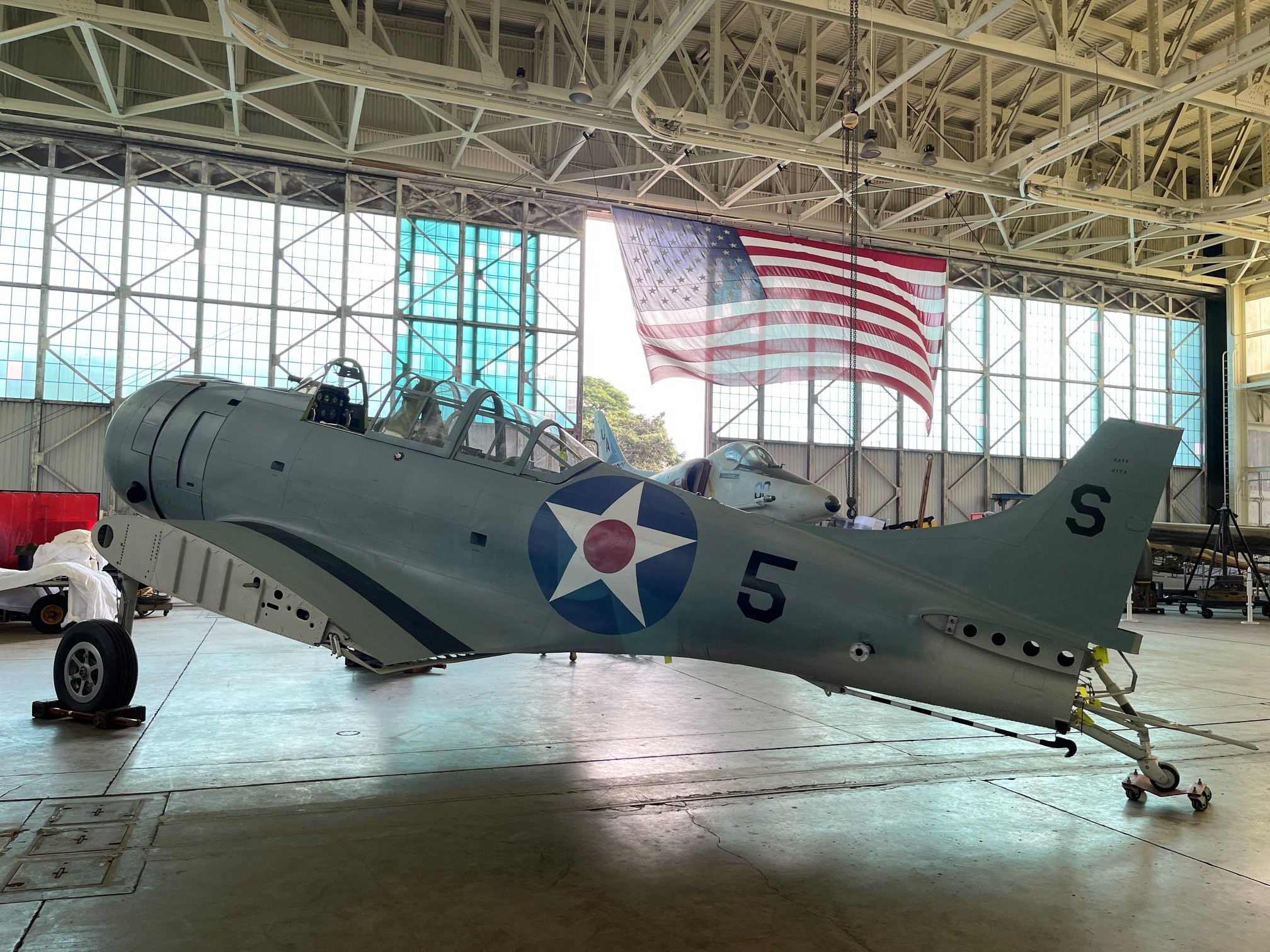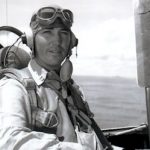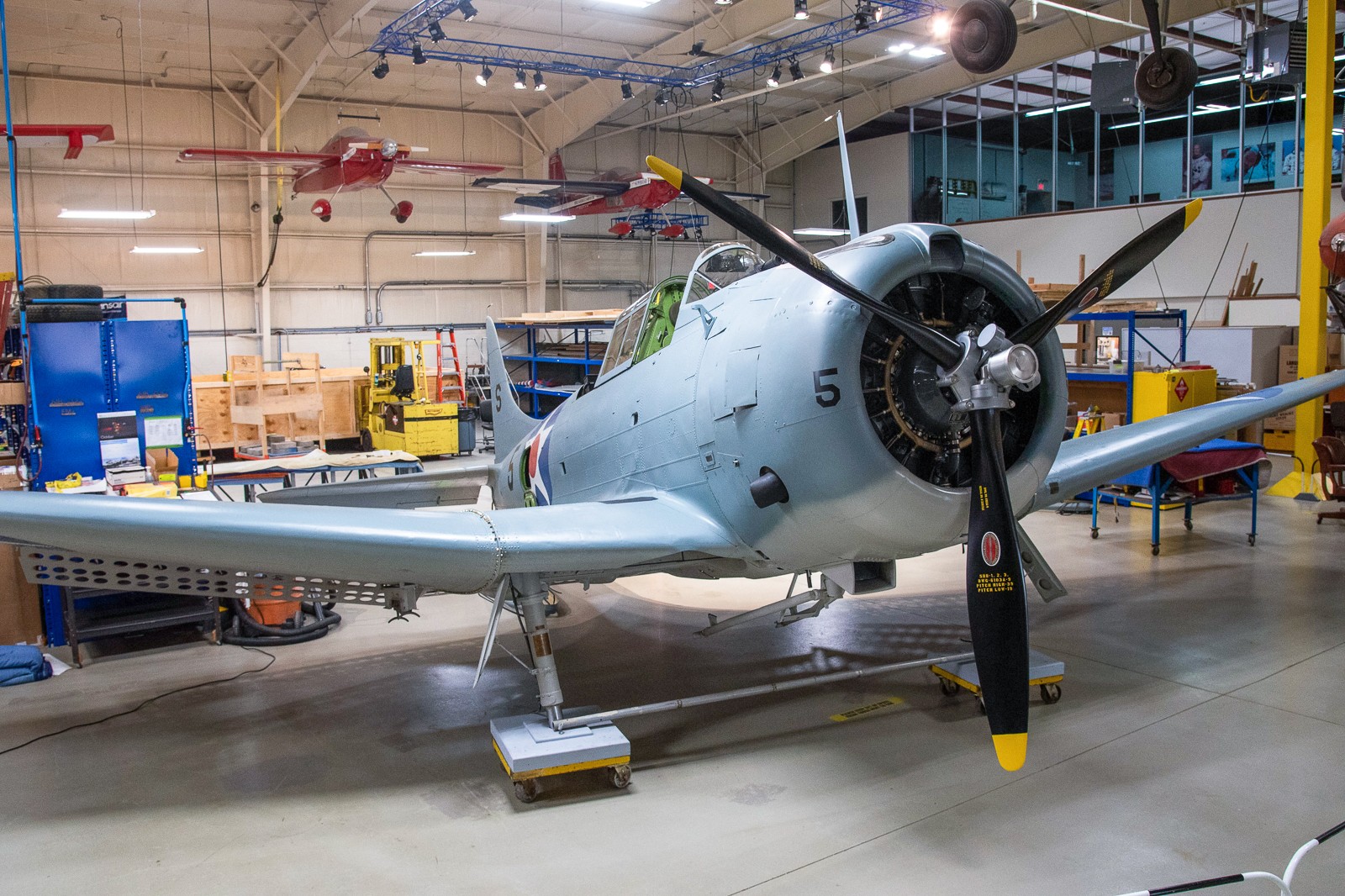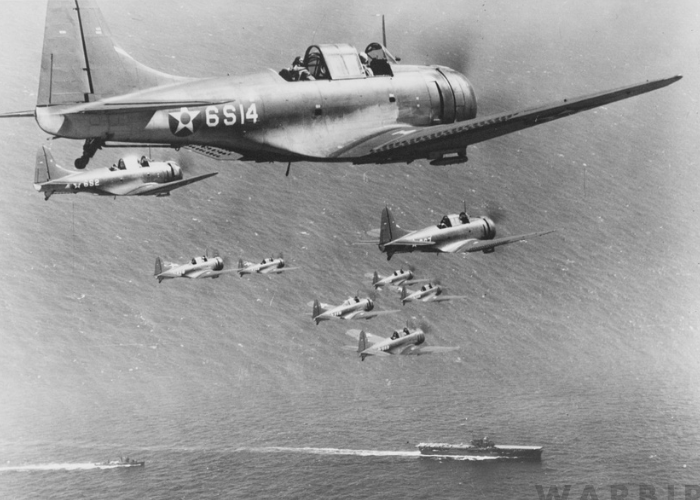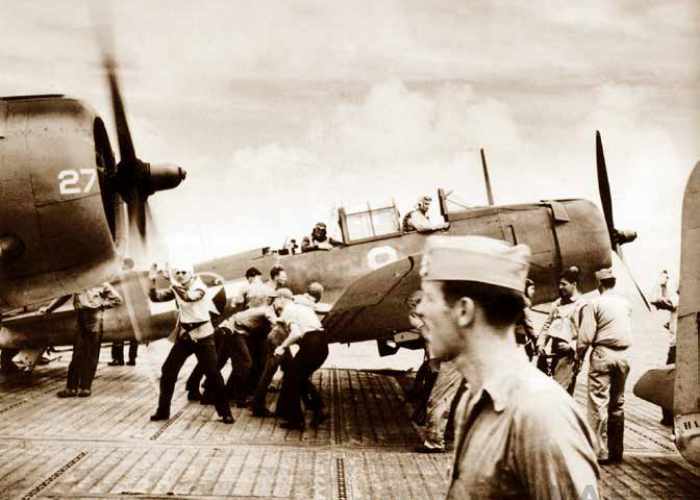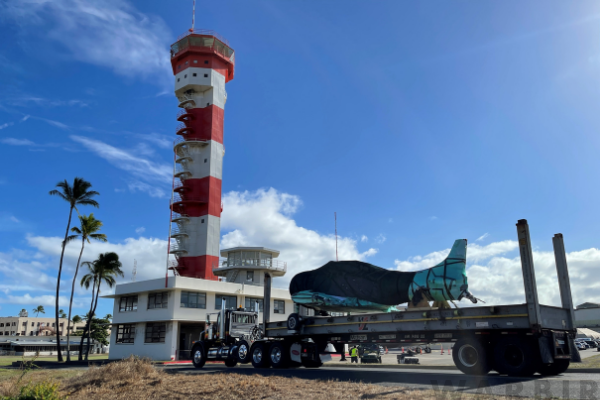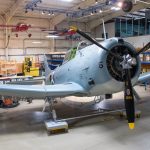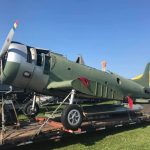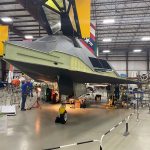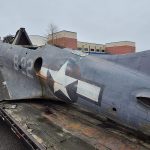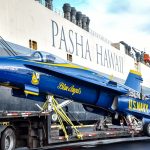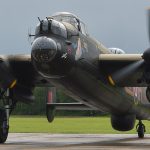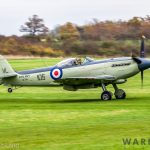Back in October, we reported that, following some 40,000 hours of volunteer labor, the restoration team at the Air Zoo Aerospace and Science Museum in Kalamazoo, Michigan had completed the restoration of Douglas SBD-2P Dauntless BuNo.2173. That article also noted that the dive-bomber was due to depart Kalamazoo for a new home at the Pearl Harbor Aviation Museum on Ford Island in Honolulu, Hawaii. We can now report that this combat-veteran Dauntless has completed her ocean voyage to Hawaii, and is safely ensconced within the Pearl Harbor Aviation Museum’s historic Hangar 79, which still bears scars from that fateful day of the Japanese attack in December, 1941. BuNo.2173 is presently undergoing reassembly for the move into nearby Hangar 37, where she will take the place of SBD-5 BuNo.36177. The latter aircraft will soon return stateside to become a static exhibit within the Collings Foundation’s American Heritage Museum in Hudson, Massachusetts.
SBD-2P BuNo.2173 has a fascinating history, as the (gently edited) description from the Pearl Harbor Aviation Museum illustrates below…
Of the 5,936 Douglas Dauntless dive bombers built between 1940 and 1944, only a fraction of them have survived the intervening eight decades. Even fewer have ended up preserved in essentially “time capsule” condition. The prized addition of a Douglas Dauntless SBD-2P to the Pearl Harbor Aviation Museum’s collection would have been far less likely were it not for a carburetor icing incident over Lake Michigan on February 18th, 1944. Forced to ditch, our SBD-2P stood nose-down on the lake bottom for nearly 65 years before a salvage team raised her from the depths on June 19th, 2009.
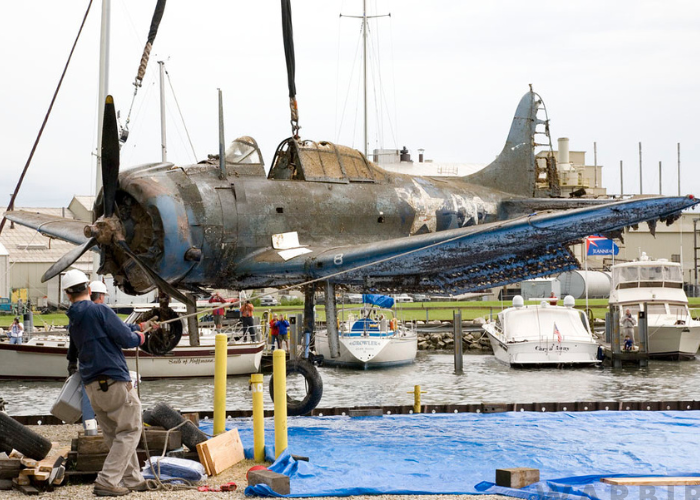
Former McDonald’s Chairman Fred Turner sponsored this recovery effort as a tribute to his friend Rear Admiral James “Jig Dog” Ramage. Because our aircraft’s restoration would take many years to complete, the National Naval Aviation Museum in Pensacola, Florida loaned us SBD-5 BuNo.36711 to take her place in the interim. That aircraft is currently on display in our Battle of Midway exhibit. The Museum’s SBD-2P, a Pacific WWII veteran, was sent to our friends at the Air Zoo Aerospace & Science Museum in Kalamazoo, Michigan, where they worked hard over five years to restore the aircraft to its former glory.
The SBD’s design evolved through six iterations during the war, adding self-sealing fuel tanks, armor plate, and an increased number of machine guns. Along with the design changes, sub-categories designate the versatile aircraft’s warfare applications.
For instance, the P in our Dauntless’s type designation indicates that the Navy ordered it as a photo-reconnaissance variant; of the 87 SBD-2s which Douglas Aircraft built, only 14 were modified for such a role. The SBD-5 was the most numerous Dauntless variant, with 2,965 examples produced. The SBD-5 had a slightly more powerful (1,200hp) Wright R-1820-60 Cyclone engine and increased ammunition capacity.
All records of Navy aircraft are ordered and individually identified by their assigned Bureau Numbers. The records for our Douglas Dauntless SBD-2P, Bureau Number 2173, trace the aircraft from delivery to the Navy in early 1941, as a photoreconnaissance aircraft, to its assignment with Scouting Squadron VS-6 aboard the aircraft carrier USS Enterprise (CV 6).
The aircraft was subsequently assigned to a Battle Force pool at San Diego in August 1941. It was still in California on December 7th, 1941, and assigned to a Battle Force pool at Pearl Harbor one month later. At this point, our Dauntless appears to have been confused with the record keeping for SBD-3 BuNo.2179. The latter SBD crashed in an incident while assigned to the carrier USS Hornet (CV 12). However, handwritten notations on that aircraft’s history cards recorded BuNo.2173 instead of BuNo.2179 – an easy mistake in wartime, but one which created a conundrum for aviation historians!
Researching other official Navy records, historians and researchers identified the error and proceeded to unravel the fascinating history of our SBD-2P. Indeed, the search for our SBD’s history reads like a detective’s investigation. Dates, momentous historical events, heroic exploits, and the stories of BuNo.2173’s brave crews emerge as an engaging narrative, tracing the aircraft from San Diego to Pearl Harbor, to it becoming cargo aboard USS Yorktown (CV 5), to its frontline squadron assignment with VS-5 during the Battle of the Coral Sea, to its training support at three mainland Naval Air Stations, to its service as part of the Lake Michigan Carrier Qualification Training Unit, and finally its crash during training exercises for landing practice on carriers-underway. Thankfully, the pilot, Lt. John Lendo, survived this final incident. Although our Dauntless spent more than half a century under the cold waters of Lake Michigan, the muddy bottom was not to be the aircraft’s final resting place.
Thanks to donor support raised in 2020, we have been able to execute step one of the exchange – shipment of the SBD-2P from Kalamazoo to Hawaii; we have now welcomed our SBD-2P home to Pearl Harbor. Once our historic SBD-2P is on display in Hangar 37, it will provide authentic context for retelling the challenges naval aviation faced during the aftermath of the December 7th, 1941 attack on Pearl Harbor.







